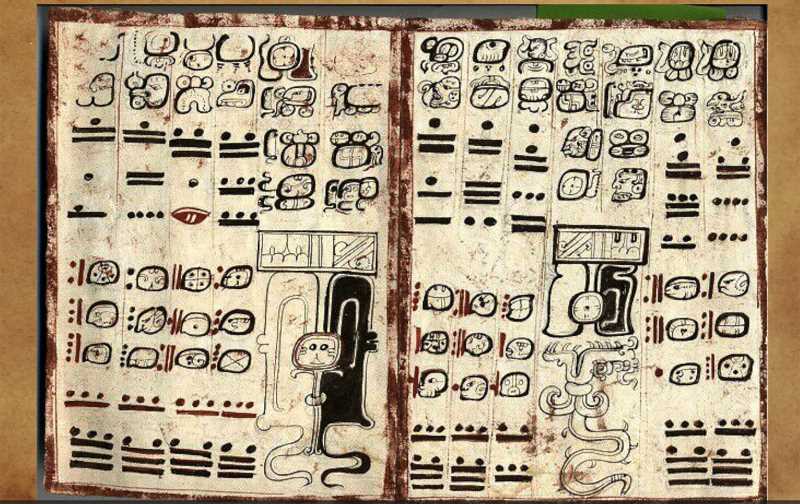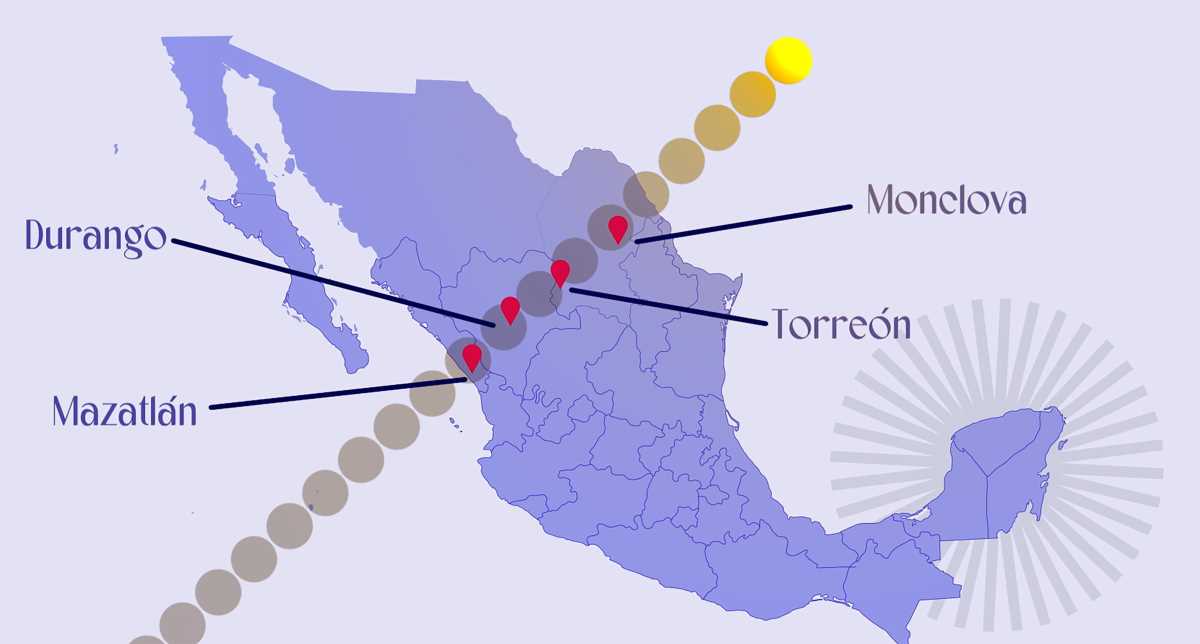The Never-Ending Solar Eclipse Enchantment
Eclipses, from ancient Ugarit to modern times, unite humanity awed by celestial mysteries. These cosmic phenomena, etched in history, continue to captivate us, reminding us of our unending wonder.

In a world constantly buzzing with scientific discoveries and technological marvels, it's easy to forget the breathtaking beauty that our universe serves up, unscripted and free of charge. But mark your calendars because on October 14, 2023, at around 11:30 a.m., Mother Nature is putting on a show that's sure to make even the most jaded stargazers stop and stare. An annular eclipse will sweep across the skies, casting a mesmerizing “ring of fire” around the Moon in the regions of Campeche and the Yucatán Peninsula, momentarily dimming the brilliance of the Sun.
But that's just a teaser. Fast-forward to April 8, 2024, a mere five months and 22 days later, and we've got a total solar eclipse making its grand entrance in Mexico. In Sinaloa, Durango, and Coahuila, daylight will vanish entirely, plunging these areas into an eerie twilight zone where it's night in the middle of the day, but only for a bit over four spellbinding minutes.
Now, I know what you're thinking: “Eclipses, ancient news, right?” Well, dear reader, you'd be gravely mistaken. These celestial events, which the Greeks fondly referred to as “ἔκλειψις” or 'disappearance,' and the Mayans whimsically called “pa'al k'in” or 'broken sun,' continue to captivate our collective imagination.
Dr. José Franco, a seasoned star enthusiast from UNAM's Institute of Astronomy, attests to their timeless allure. He reminisces about his first eclipse encounter on March 7, 1970, as a young physics major, when he embarked on a pilgrimage to the quaint Oaxacan town of Miahuatlán. “I have witnessed many more since then, and they still amaze me,” he confesses with the enthusiasm of a lifelong eclipse aficionado.
But let's get to the heart of the matter, shall we? How is it possible that the seemingly minuscule Moon can pull off the greatest cosmic magic trick of all time by blocking our blazing Sun, an object so colossal that it could swallow approximately 65 million Moons whole?
Well, it's all about perspective, as Professor Franco eloquently elucidates. Up there in the firmament, both the Sun and the Moon appear nearly identical in size. You see, while our lunar friend boasts a diameter 400 times smaller than that fiery celestial sphere, it cozies up to us from a mere 400 times closer. It's like holding a marble close to your eye and watching it magically swell to the size of a soccer ball, a delicate thing between dimension and perception known as angular diameter. This cosmic choreography allows the Moon to almost perfectly obscure the Sun as it saunters across its radiant path.
The Moon's orbit isn't a perfect circle; it's more like an elongated ellipse. So, sometimes, it plays hard to get and positions itself farther from Earth, giving the Sun just enough room to peek around its edges. This celestial flirtation creates what we call an annular eclipse, leaving a luminous halo around the Moon's silhouette. On the flip side, when the Moon gets up close and personal with the Sun, it steals the spotlight, turning day into night, complete with twinkling stars - that's what we call a total eclipse.
Astrophysicist extraordinaire Neil de Grasse Tyson once described these cosmic marvels as “a cosmic spectacle that we should all experience at least once in our lifetime.” He went on to jest that without our celestial dance partner, the Moon, we wouldn't have werewolves or Pink Floyd's iconic album, “The Dark Side of the Moon.” But, he reminded us that, most importantly, we'd miss out on the awe-inspiring emotions that only eclipses can stir within us.

Shadows Across the Cosmos
Imagine drifting through the vast expanse of space, far from the confines of Earth's atmosphere, with only the Moon to keep you company. As the Moon slides gracefully between the Sun and Earth, a mesmerizing spectacle unfolds. The Moons shadow, a ghostly silhouette, first graces a tiny portion of our planet and then gracefully slides across its surface, casting a dark ribbon with varying shades of gray. This celestial phenomenon, known as the “path of umbra and penumbra,” paints momentary darkness wherever it passes.
Now, picture yourself perched right in the heart of that shadowy strip, where the gray is at its most intense - the umbra zone. Here, you'd witness the eclipse in all its glory. On the fringes of that gray area, in the penumbra zone, you'd still catch a partial glimpse of the spectacle, but not the entire show.
Professor José Franco, explains that the upcoming annular eclipse on October 14, 2023, will obscure the Sun by 90.5 percent. It will embark on its celestial journey in the vast Pacific Ocean, venture into the United States through Oregon, and continue its enthralling voyage, exiting through Texas. Around 10:45 a.m., it will make its entrance into Mexico near Campeche, descend through the lush jungle toward Calakmul, then continue its journey through parts of Quintana Roo and Belize. This path will take it into Central America, and it will eventually conclude its celestial trip in Brazil before disappearing into the Atlantic.
For Professor Franco, understanding the mechanics behind these celestial pageants provides us with insights into our planet's uniqueness. While eclipses happen elsewhere in the Solar System, what transpires on Earth is nothing short of extraordinary. He points out that just over a year ago, NASA's Perseverance rover recorded the passage of Phobos, one of Mars' moons, in front of the Sun. The video captured a small, irregularly shaped moon, more potato-like than spherical, floating in front of the star. Yet, it failed to obscure even a third of the Sun's radiant disk.
Eclipses may not be exclusive to Earth, but our home is undoubtedly the privileged stage for these cosmic dramas. In our Solar System, 163 moons orbit six of its planets (Mercury and Venus being the exceptions), but none can match our Moon's prowess in nearly perfectly covering the solar disk.
The forthcoming event on April 8, 2024, in Mexico will serve as a shining example of Earth's eclipse superiority. On that day, the Moon will flawlessly fit into the cosmic puzzle, completely concealing the space occupied by the Sun in the sky.
“This time, the eclipse will be total,” Professor Franco elucidates, “It will commence in the Pacific Ocean, make its way into America through Mazatlán, and then ascend to Durango, Torreon, Cuatro Cienegas, and Monclova. From there, it will enter the United States, proceed toward Canada, and eventually exit through the southeastern part of that country, fading away into the Atlantic.”
As the event draws nearer, Professor Franco remains unsure of his exact whereabouts on that day, but one thing's for certain - he'll be in northern Mexico, where the path of the umbra graces the land. “Most likely, we'll be among the people, providing instructions on how to observe this phenomenon safely. Yet, when the time comes, I'll take a moment to savor the experience of witnessing the world go dark, for I, too, will be just another spectator.”

Eclipses Through the Ages
A remarkable event unfolded 3,245 years ago, on March 5, 1223, B.C., in the ancient city of Ugarit, located in what we now know as present-day Syria. Archaeologists, armed with pickaxes and a thirst for uncovering the secrets of the past, stumbled upon a clay tablet that would rewrite the history of human fascination with the cosmos. Carved into the tablet were inscriptions that read, “On the day of the new moon, in the month of hiyaru, the sun hid itself in shame.”
This, was the oldest recorded eclipse in human history. A moment when the Sun, that fiery celestial deity, concealed itself in a bout of humility. It might seem like an ancient anecdote, but it is far more than that. This nugget of history offers us precious insights. It reveals that in the span of the last three millennia, the Earth's rotation has remained relatively unchanged. More importantly, it underscores that from the dawn of civilization, humans felt compelled to record and decipher the mysteries of the night sky.
Professor José Franco eloquently points out that the transition from prehistory to history coincided with the invention of writing. “From the moment humans mastered the art of writing, they embarked on a mission to chronicle everything – the tales of their cities and the enigmatic tales of the heavens above. The sky is the cradle of knowledge, and in a profound sense, the history of astronomy is the history of our civilization.”
Hence, it's no surprise that learned minds from far-flung cultures, lacking direct contact with each other, arrived at identical conclusions through different paths. As the legendary Guatemalan writer Augusto Monterroso once penned, an intrepid friar, having read the musings of Greek philosophers, sought to dazzle a group of indigenous Guatemalans by claiming to predict solar and lunar eclipses. Alas, his grandiose endeavor met a rather unfortunate fate, as he ended up on a sacrificial stone while his executioner recited the countless dates of eclipses, meticulously recorded by Mayan astronomers in their codices, sans Aristotle's guidance.
Eclipses, it seems, have woven themselves into the history, often influencing the course of events. Herodotus documented how a solar eclipse on May 28, 585 B.C. halted the war between the Medes and the Lydians, a celestial ceasefire of sorts. Moreover, astroarchaeologist Jess Galindo, hailing from the hallowed halls of UNAM Institute of Aesthetic Research, posits that another eclipse, on April 21, 1325, A.D., might have provided the Aztecs with the cosmic green light to establish the city of Mexico-Tenochtitlan. The city of Mexico-Tenochtitlan was established in the middle of a lake.
These celestial phenomena, in addition to being the earliest pages of our shared history, could well be the guiding stars behind significant historical events. It's as if the universe itself conspired to direct the course of humanity through these cosmic wonders.
Jorge Luis Borges once mused in his essay The Four Cycles. If we were to compare the texts of yesteryears with those of today, we'd find that humanity continually returns to the same themes that have marked our collective consciousness. In the ancient city of Ugarit, someone left a written record, a testimony of their astonishment at witnessing the Sun's momentary disappearance. Three thousand two hundred and forty-five years later, here we are, still writing about eclipses because, we've never lost our sense of wonder.





